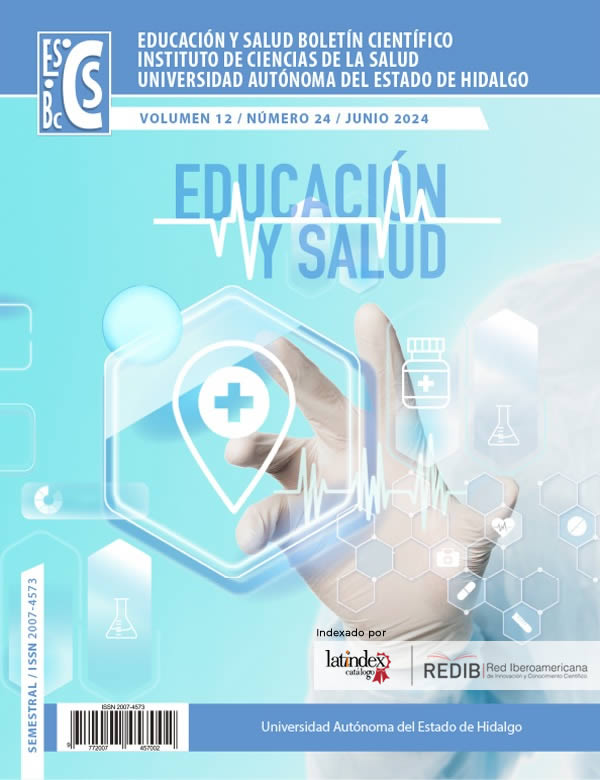Physiopathology of Ophidic Accident by Bothrops (Bothropic)
Abstract
Ophidic accident or snake bite is defined as a cutaneous lesion caused by snake bite, preceded by venom inoculation. More than 90% of ophidian accidents in America are caused by individuals belonging to the Viperidae family. The most representative snake of this family is Bothrops asper. The venom is an exocrine secretion of the salivary glands of the snake, which fulfills digestion and defensive functions, mechanism of action based on substances such as phospholipase A2, hyaluronidases, proteinases, and myotoxins. Clinical manifestations can presented which range from a general picture, to systemic and catastrophic conditions, according to which the clinical picture is classified as mild, moderate and severe. The specific treatment is with Antiophidic Serum with neutralizing activity for snake venoms of the Crotaline subfamily (Antivipmyn®). The objective of this narrative review is to describe the pathophysiology of the ophidic accident and some guidelines for its therapeutic management. The above is in order for the health professional to obtain the basic knowledge to deal with this type of accident.
Downloads
References
Zúñiga I, Caro J. Aspectos clínicos y epidemiológicos de la mordedura de serpientes en México. Evid. Med. Invest. Salud. 2013; 6 (4): 125-36.
Ministerio de Salud Pública y Bienestar Social, Asunción Paraguay [Internet]. Manual de procedimientos sobre accidentes ofídicos. [Citado 26 Nov 2023]. 2008. Disponible en: https://dgvs.mspbs.gov.py/files/documentos/01_07_2016_19_21_45_guia-de-accid-ofidicos.pdf
Centro de Información Toxicológica de Veracruz [Internet]. Guía de diagnóstico y tratamiento de intoxicación por accidente ofídico bothrópico [Citado 27 Nov 2023]. Disponible en: https://www.ssaver.gob.mx/citver/wp-content/uploads/sites/37/2023/06/Accidente-Ofidico-Bothropico.pdf
Rojas J, Corcuera R, Marcas G. Accidente ofídico fatal por Bothrops atrox en un niño de Ucayali, Perú. Rev. CES. Med 2019; 33(3): 248-53.
Abusaid S, Muñoz C, Mota M, Sandoval M. Envenenamiento ofídico por el género bothrops complicado con miocardiopatía tóxica: a propósito de un caso. CIMEL 2014; 19(1): 31-34.
Departamento de Toxicología [Internet]. Guía Diagnóstico y Tratamiento de envenenamientos por Ofidios [Citado 20 Nov 2023]. 2017. Disponible en: https://www.mendoza.gov.ar/wp-content/uploads/sites/16/2017/05/Recomendaciones-Envenenamiento-por-Ofidios-de-Cuyo-2017.pdf
Maguiña C, Chincha O, Vilcapoma P, Morante D. Actualización en clínica y terapia de mordedura de serpiente (ofidismo). Rev. Med. Hered. 2020; 31:48-55.
Oficina General de Epidemiología [Internet]. Ofidismo [Citado 8 nov 2023]. Disponible en: https://es.scribd.com/document/43456626/Ofidismo
Brenes M. Accidente Ofídico. Revista Méd. Costa Rica Centroam. LXXI. 2014; 611: 539 – 50.
Organización Panamericana de la Salud [Internet]. Manual para la identificación, prevención y tratamiento de mordeduras de serpientes venenosas en Centroamérica, volumen I [Citado 26 Nov 2023]. Guatemala. 2009. Disponible en: https://iris.paho.org/handle/10665.2/34498
Instituto Nacional de Salud [Internet]. Diagnóstico y tratamiento de los accidentes por animales ponzoñosos [Citado 23 Nov 2023]. Perú, 2004. Disponible en: https://repositorio.ins.gob.pe/bitstream/handle/20.500.14196/118/CNPB-0003.pdf?sequence=3&isAllowed=y
Aguilera J, Aguilera E. Prevención y manejo de mordeduras por serpientes. Arch. Méd. Camagüey 2012;16(3):369–83.
Dirección Nacional de Prevención y Control y Dirección Nacional de Normatización [Internet]. Manejo clínico de pacientes con mordeduras de serpientes venenosas y picaduras de escorpiones [Citado 27 nov 2023]. Quito, 2017. Disponible en: https://aplicaciones.msp.gob.ec/salud/archivosdigitales/documentosDirecciones/dnn/archivos/AC_00153_2017%2021%20NOV.pdf
Villeda R. Mordeduras de serpiente - toxicidad y estudios de laboratorio. Rev. Med. Hondur. 2013; 13 (1): 55-63.
David F, Castrillón J, Acosta E, Hernández L, Alonso M. Envenenamiento ofídico. Salud Uninorte. Barranquilla. 2007; 23 (1): 96-111.
Ministerio de Salud de la Nación [Internet]. Guía de Prevención, Diagnóstico, Tratamiento y Vigilancia Epidemiológica de los Envenenamientos Ofídicos [Citado 26 nov 2023]. Buenos Aires, 2014 Disponible en: https://www.santafe.gov.ar/index.php/web/content/download/159331/779871/file/GUIA_DE_OFIDISMO%202007.pdf
Mutricy R, Heckmann X, Douine M, Marty C, Jolivet A, Lambert V, et al. (2018). High mortality due to snakebites in French Guiana: Time has come to re.evaluate medical management protocols. PLoS Negl. Trop. Dis. 2018; 12(7): e0006482.
Otero-Patiño R, Silva-Haad JJ, Barona Acevedo MJ, Toro Castaño MF, Quintana Castillo JC, Díaz Cadavid A, et al.. Accidente Botrhropico en Colombia: estudio multicentrico de la eficacia y seguridad de Antivipmyn-Tri, un antiveneno polivalente producido en México. Iatreia 2007; 20(3): 244-62.
Laboratorios Silanes, S.A de C.V. [Internet]. Guía de tratamiento en intoxicaciones por animales ponzoñosos. [Citado 27 Nov 2023]. Disponible en: chrome-extension://efaidnbmnnnibpcajpcglclefindmkaj/https://seciss.facmed.unam.mx/wp-content/uploads/2022/03/guia-de-tratamiento-2014.pdf
Copyright (c) 2024 Omar Azuara Antonio, Mario I. Ortiz, Francisco A. Mateos Mauricio, Jesús del C. Madrigal Anaya, Luz Hernández-Ramírez

This work is licensed under a Creative Commons Attribution-NonCommercial-NoDerivatives 4.0 International License.










